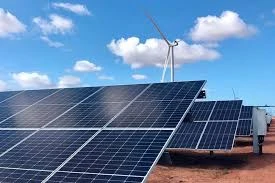bifacial photovoltaic panels
Bifacial photovoltaic panels represent a significant advancement in solar technology, designed to enhance energy efficiency and maximize power generation. Unlike traditional monofacial panels, which only capture sunlight from one side, bifacial panels are capable of harnessing solar energy from both sides. This dual-sided capability offers several advantages, particularly in terms of energy yield and overall efficiency.
One of the primary benefits of bifacial panels is their ability to capture reflected sunlight. The rear side can utilize albedo—a measurement of how much light is reflected by the ground beneath the panels. Depending on the surface material, such as concrete, gravel, or white sand, the reflected sunlight can significantly increase energy output. Studies have shown that bifacial panels can produce anywhere from 10% to 30% more electricity than their monofacial counterparts in optimal conditions.
Another advantage of bifacial photovoltaic panels is their durability and longevity. These panels are typically constructed with robust materials that resist environmental factors, such as hail, wind, and humidity. Their design allows for better heat dissipation, reducing the risk of overheating and degradation over time. As such, investors and homeowners can expect a longer lifespan and a better return on investment.
Installation flexibility is another key feature of bifacial panels. They can be deployed in various configurations, such as on rooftops, ground-mounted systems, or solar farms. The ability to take advantage of both direct and indirect sunlight makes them ideal for regions where sunlight conditions may fluctuate throughout the day or where space is limited.
bifacial photovoltaic panels

Moreover, bifacial technology is compatible with advanced tracking systems, which can further enhance energy capture by following the sun’s movement across the sky. This innovation maximizes exposure to sunlight throughout the day, further boosting the overall efficiency of solar installations.
In addition to technical benefits, the growing popularity of bifacial photovoltaic technology is also driven by its sustainability aspect
. As the world moves towards renewable energy sources to combat climate change, bifacial panels contribute to cleaner energy generation and reduced carbon footprints.In conclusion, bifacial photovoltaic panels are at the forefront of solar technology, offering enhanced efficiency, durability, and versatility. With their ability to generate more energy from both sides, they present a compelling option for individuals and organizations looking to invest in sustainable energy solutions. As innovation in this field continues to evolve, bifacial panels will likely play a key role in the transition towards a greener, more sustainable future.
-
String Solar Inverter: The High-Efficiency Solution for Smart Solar EnergyNewsJul.14,2025
-
Revolutionizing Rooftop Energy with the Power of the Micro Solar InverterNewsJul.14,2025
-
Power Independence with Smart Off Grid Solar Inverter SolutionsNewsJul.14,2025
-
On Grid Solar Inverter: Powering the Future with Smart Grid IntegrationNewsJul.14,2025
-
Monocrystalline Solar Panels: High-Efficiency Power for the Future of Clean EnergyNewsJul.14,2025
-
Bifacial Solar Panel: A Smarter Investment for Next-Generation Energy SystemsNewsJul.14,2025







